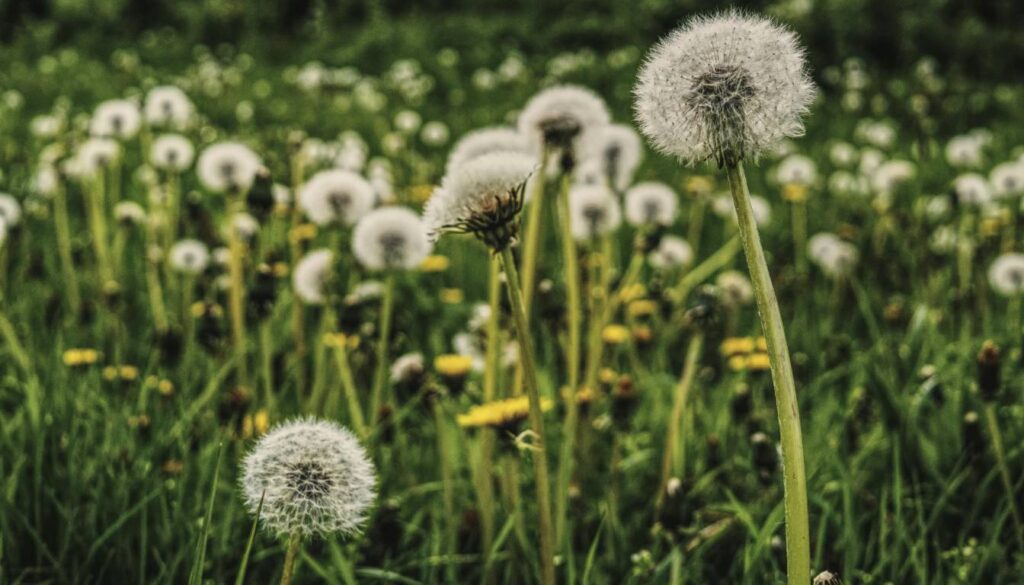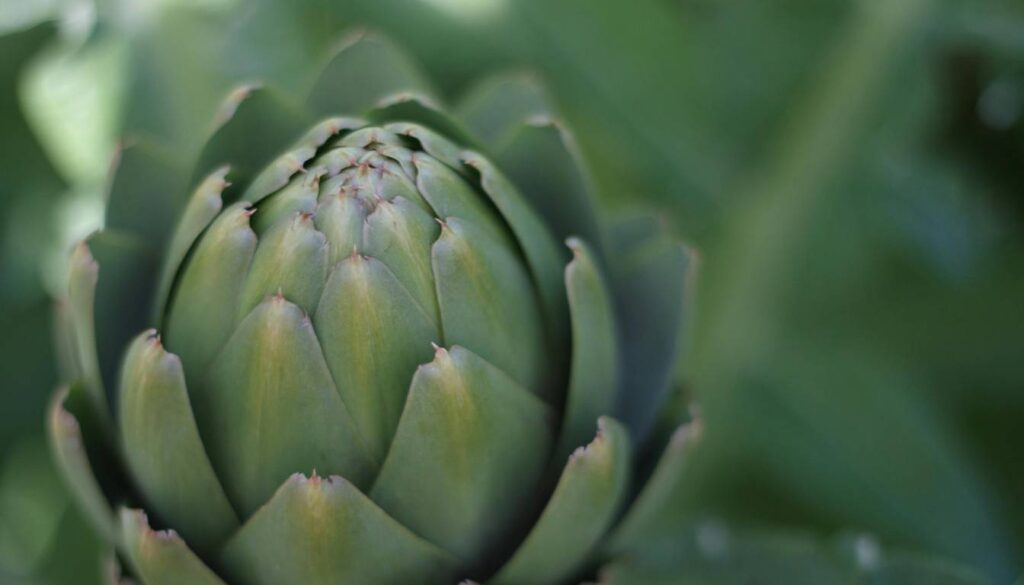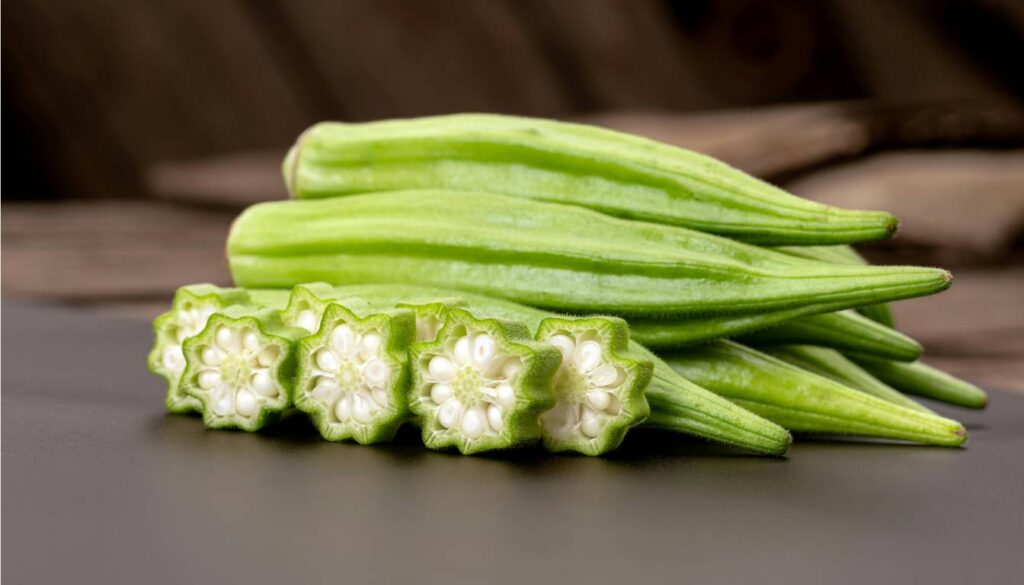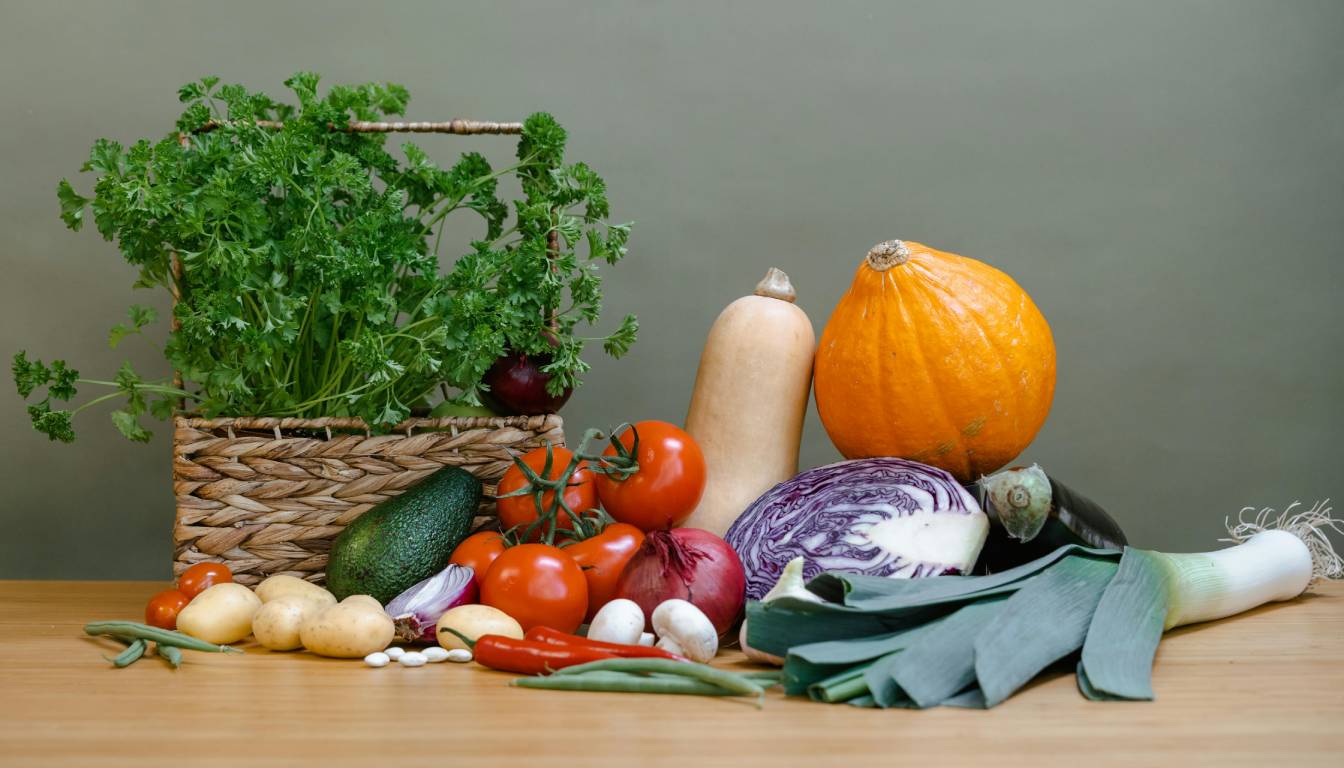Oklahoma is home to a variety of edible plants perfect for foraging or educational purposes. As someone passionate about foraging and learning about local plants, I’ve discovered Oklahoma’s diverse range of edible plants. They’re both nutritious and delicious! Foraging for edible plants in Oklahoma can be a fun and educational activity for people of all ages.
It is important to note, however, that foraging should always be done responsibly and with caution. It is important to properly identify plants before consuming them, as some plants can be poisonous. Additionally, it is important to only take what you need and to leave the rest for other foragers and wildlife.
Learning about edible plants in Oklahoma can also be a great way to connect with nature and gain a deeper appreciation for the environment. By learning about the different plants that grow in Oklahoma, we can gain a better understanding of the natural world and our place in it. Whether you are a seasoned forager or just starting, there is always something new to learn about the edible plants that grow in Oklahoma.
Understanding Oklahoma’s Flora
As an avid forager, I have spent countless hours exploring the diverse flora of Oklahoma. Understanding the native plants and their habitats, as well as the climate influence on plant edibility and soil types, is essential to successfully forage for edible plants in Oklahoma.
Native Plants and Their Habitats
Foraging in Oklahoma is an activity enriched by the state’s diverse flora, which includes plants native to the central grasslands and those that thrive in the temperate forests. Notable among these are the sand plum, also known as the Chickasaw plum, pawpaw, and wild onion. These plants have adapted well to Oklahoma’s climate and soil types, making them easier to forage and identify during your foraging adventures in Oklahoma.
Climate Influence on Plant Edibility
Oklahoma’s climate is characterized by hot summers and cold winters, with moderate rainfall throughout the year. This climate has a significant influence on the edibility of plants. For example, in the hot summer months, many plants become tough and inedible. However, during the cooler months, plants like wild spinach and watercress thrive and are delicious.
Soil Types and Edible Plant Growth
Soil types also play a crucial role in the growth and edibility of plants. Oklahoma has several soil types, including sandy loam, clay, and red soil. Plants like wild onions and pawpaws prefer sandy loam soil, while plants like wild spinach and watercress thrive in wet, clay soils.
Understanding Oklahoma’s flora is essential to successfully forage for edible plants. By knowing the native plants and their habitats, the climate influence on plant edibility, and soil types and edible plant growth, foragers can confidently and safely identify and harvest edible plants in Oklahoma.
Foraging Basics
Safety and Identification
Foraging for edible plants in Oklahoma can be a fun and rewarding experience, but it is important to do so with caution. Before heading out, it is crucial to have a good field guide to help identify the plants that are safe to eat. I always recommend consulting with an expert or taking a class to gain experience and knowledge in identifying edible plants. Some plants can be toxic and even deadly if ingested, so it is important to be certain of their identification before consuming.
Foraging Ethics and Sustainability
Foraging in Oklahoma is a great way to connect with nature and enjoy the outdoors while also providing a source of food. However, it is important to forage ethically and sustainably. I always follow the “leave no trace” principle and only take what I need when foraging in Oklahoma. It is important to never take more than 25% of a plant and to never take endangered or protected species. Additionally, it is important to forage in areas within Oklahoma that are not contaminated with pesticides or other pollutants.
Tools and Techniques
Foraging requires a few basic tools and techniques to be successful. I always bring a basket or bag to carry my foraged plants, as well as a pair of gloves to protect my hands from thorns and other hazards. I also bring a small knife or scissors to help harvest the plants. When foraging, I always look for plants that are in good condition and avoid plants that are diseased or damaged. It is important to be respectful of the plants and their environment by not trampling on other plants or damaging the ecosystem.
Overall, foraging for edible plants in Oklahoma can be a fun and rewarding experience, but it is important to do so with caution, ethics, and sustainability in mind. By following these basic foraging principles and techniques, I can safely and responsibly enjoy the bounty of nature.
Common Edible Plants in Oklahoma

As someone who loves foraging for edible plants, I have discovered that Oklahoma has a rich variety of options to choose from. Here are some of the most common edible plants that can be found in Oklahoma:
Leafy Greens and Herbs
Leafy greens and herbs are some of the most common edible plants in Oklahoma. Some of the popular ones include cress, mint, dandelion, and violet. These plants are usually used as garnishes, seasonings, or in salads. They are also rich in vitamins and minerals.
| Edible Plant | Leaves | Flowers |
|---|---|---|
| Cress | ✓ | ✓ |
| Mint | ✓ | ✓ |
| Dandelion | ✓ | ✓ |
| Violet | ✓ | ✓ |
Berries and Fruits
Berries and fruits are also abundant in Oklahoma. Some of the popular ones include blackberries, raspberries, strawberries, and wild plums. These fruits are usually eaten fresh or used in making jams, jellies, and pies. They are also rich in antioxidants and nutrients.
| Edible Plant | Berry | Fruit |
|---|---|---|
| Blackberry | ✓ | |
| Raspberry | ✓ | |
| Strawberry | ✓ | |
| Wild Plum | ✓ |
Roots and Tubers
Roots and tubers are also common in Oklahoma. Some of the popular ones include Jerusalem artichokes, potatoes, and ramps. These plants are usually used in making soups, stews, and casseroles. They are also rich in fiber and nutrients.
| Edible Plant | Roots | Seeds |
|---|---|---|
| Jerusalem Artichoke | ✓ | |
| Potato | ✓ | |
| Ramps | ✓ | ✓ |
Overall, Oklahoma is a great place to forage for edible plants. Just make sure to properly identify the plants before consuming them.
Culinary Uses of Wild Edibles
As someone who enjoys incorporating wild edibles into my meals, I’ve discovered that there are a variety of ways to utilize these plants in the kitchen. Here are some of the ways I’ve found to be most effective:
Incorporating Edibles into Meals
One of the easiest ways to incorporate wild edibles into your meals is by adding them to salads. Many wild edibles have a flavor that is similar to lettuce or spinach, making them a great addition to any salad. You can also sauté them with other vegetables to create a flavorful side dish or add them to soups and stews for a unique flavor.
Preservation and Storage – Edible Plants in Oklahoma
If you have an abundance of wild edibles, you may want to consider preserving them for later use. One way to do this is by drying them. Dried wild edibles can be used in teas or added to soups and stews. You can also freeze them for later use.
Unique Flavors and Textures
Wild edibles can add a unique flavor and texture to your dishes. For example, cattail shoots have a flavor that is similar to asparagus, while lamb’s quarter has a slightly nutty flavor. Dandelion greens have a bitter flavor that pairs well with sweet dishes, while the texture of roasted acorns is similar to that of roasted chestnuts.
When incorporating wild edibles into your meals, it’s important to remember that some plants may need to be cooked before eating, while others can be eaten raw. Additionally, some wild edibles may have a high fiber content, so it’s important to introduce them slowly into your diet to avoid digestive issues.
Overall, wild edibles can be a flavorful and nutritious addition to any meal. Whether you’re adding them to salads, soups, or stews, or using them to create unique beverages or desserts, there are a variety of ways to incorporate these plants into your cooking.
Health Benefits and Nutritional Value – Edible Plants in Oklahoma

As someone who enjoys foraging for edible plants in Oklahoma, I am always interested in learning about the health benefits and nutritional value of the plants I find. Wild plants are often rich in vitamins, minerals, and fiber, making them a great addition to any diet.
Vitamins and Minerals in Wild Plants – Edible Plants in Oklahoma
Many wild plants in Oklahoma are excellent sources of vitamins and minerals. For example, iron is an essential mineral that helps transport oxygen throughout the body. Wild plants such as lamb’s quarters and purslane are high in iron and can help prevent anemia.
Wild plants are also rich in vitamins A and C, which are important for maintaining healthy skin, eyes, and immune function. Plants such as dandelion greens and wild rose hips are excellent sources of vitamin C, while wild carrots and sweet potatoes are high in vitamin A.
Another important nutrient found in many wild plants is beta-carotene. This antioxidant is converted into vitamin A in the body and helps protect against free radicals. Wild plants such as yellow dock and wild lettuce are rich in beta-carotene.
Medicinal Properties
In addition to their nutritional value, many wild plants in Oklahoma also have medicinal properties. For example, fiber is important for maintaining healthy digestion and preventing constipation. Wild plants such as chicory root and yarrow are high in fiber and can help promote healthy digestion.
Other wild plants have been used for centuries by indigenous people for their medicinal properties. For example, echinacea is a medicinal plant that has been used to boost the immune system and treat respiratory infections. Wild plants such as mullein and plantain are also known for their medicinal properties.
Overall, wild plants in Oklahoma offer a variety of health benefits and nutritional value. By incorporating these plants into your diet, you can improve your overall health and well-being.
Cultivating Edible Plants – Edible Plants in Oklahoma
As someone who loves to grow their food, I find cultivating edible plants to be a rewarding and fulfilling experience. There are many benefits to growing your food, including the satisfaction of knowing exactly where your food comes from and what went into growing it. In this section, I’ll discuss some tips for gardening with native edibles and wildcrafting in your backyard.
Gardening with Native Edibles
Native plants are well-suited to the Oklahoma climate and can be easier to grow than non-native plants. Some popular native edibles in Oklahoma include okra, tomatoes, peppers, and peaches. When starting a native garden, it’s important to choose plants that are adapted to your specific region. You can find a list of recommended plants for Oklahoma in this Oklahoma State University fact sheet.
To get started with gardening, you’ll need to decide whether you want to start from seed or purchase plants. Starting from seed can be more affordable, but can also be more time-consuming. If you choose to start from seed, be sure to follow the instructions on the seed packet carefully. Some seeds need to be started indoors before transplanting outside.
Once your plants are established, it’s important to keep them healthy and free from pests. Some common pests in Oklahoma gardens include aphids, tomato hornworms, and flea beetles. You can use natural methods to control pests, such as introducing beneficial insects like ladybugs or using organic pesticides.
Wildcrafting in Your Backyard – Edible Plants in Oklahoma
If you’re interested in wildcrafting, you can start by looking for edible plants in your backyard. Some common wild edibles in Oklahoma include lettuce, carrots, onions, and potatoes. Before foraging, it’s important to be sure you can accurately identify the plants you’re collecting.
When wildcrafting, it’s important to be respectful of the environment and not over-harvest. Only take what you need and leave enough for the plant to continue growing. You should also be aware of any laws or regulations regarding foraging in your area.
If you don’t have space for a traditional garden, you can still grow edible plants in containers. Some plants that do well in containers include herbs, lettuce, and tomatoes. Just be sure to choose a container that is large enough for the plant and provides adequate drainage.
Overall, cultivating edible plants can be a fun and rewarding experience. Whether you choose to garden with native edibles or wildcraft in your backyard, there are many ways to enjoy the benefits of growing your food.
Historical and Cultural Significance – Edible Plants in Oklahoma
Native American Uses of Plants – Edible Plants in Oklahoma
Native Americans have been using plants for food, medicine, and other purposes for thousands of years. They have a deep understanding of the natural world and the plants that grow in it. In central Oklahoma, Native American tribes such as the Osage, Kiowa, and Comanche relied heavily on the plants that grew in the region. They used plants such as the prickly pear cactus, mesquite, and yucca for food, medicine, and tools.
The prickly pear cactus, for example, was used for its fruit, which is high in vitamin C and antioxidants. The pads of the cactus were also used as a vegetable and for medicinal purposes. The mesquite tree provided food in the form of its pods, which were ground into flour. The yucca plant was used for its fibers, which were used to make baskets, clothing, and cordage.
Edible Plants in Oklahoma’s History
Edible plants have played a significant role in Oklahoma’s history. The state’s diverse ecosystems offer abundant edible plant life that indigenous communities and modern foragers have utilized. For example, the eastern part of the state has extensive forested areas where oak-hickory pine and oak-hickory forests are common. These forests are home to a variety of edible plants such as pawpaws, persimmons, and blackberries.
The western part of the state, on the other hand, is dominated by tall and short prairie grasses, accommodating distinct prairie ecosystems. This region is home to a variety of edible plants such as wild onions, Indian breadroot, and buffalo gourd. These plants were used by Native Americans for food and medicine and are still used today by modern foragers.
The historical and cultural significance of edible plants in Oklahoma cannot be overstated. Native Americans have been using plants for food, medicine, and other purposes for thousands of years, and the state’s diverse ecosystems offer abundant edible plant life that has played a significant role in Oklahoma’s history.
Additional Resources and Further Reading – Edible Plants in Oklahoma

I hope this article has been informative and helpful in identifying some of the edible plants in Oklahoma. However, there is much more to learn about foraging, wildcrafting, and botany in general. Here are some additional resources and further reading to help you expand your knowledge and skills.
Educational Purposes – Edible Plants in Oklahoma
If you are interested in learning more about edible plants in Oklahoma, there are several educational resources available. The Oklahoma State University Extension offers a variety of classes and workshops on topics such as plant identification, foraging, and wildcrafting. The extension also has a variety of publications available on its website, including field guides and fact sheets.
Botanist
If you are interested in the scientific study of plants, you may want to consider becoming a botanist. Botanists study all aspects of plant life, from their physical structure to their ecological roles. To become a botanist, you will need to obtain at least a bachelor’s degree in botany or a related field.
Wildcrafting
Wildcrafting is the practice of harvesting plants from their natural environment for food, medicine, or other purposes. If you are interested in wildcrafting, it is important to do so responsibly and sustainably. The Oklahoma Wildcrafting Association offers resources and information on ethical wildcrafting practices.
Field Guide – Edible Plants in Oklahoma
A field guide is a book or other resource that provides information on the identification and characteristics of plants and animals in their natural environment. There are many field guides available for identifying edible plants in Oklahoma, including “Edible Wild Plants: A North American Field Guide” by Thomas Elias and Peter Dykeman.
Additional Resources
Here are some additional resources for learning about edible plants in Oklahoma:
- “Edible and Useful Plants of Texas and the Southwest: A Practical Guide” by Delena Tull
- “The Forager’s Harvest: A Guide to Identifying, Harvesting, and Preparing Edible Wild Plants” by Samuel Thayer
- “Nature’s Garden: A Guide to Identifying, Harvesting, and Preparing Edible Wild Plants” by Samuel Thayer
I hope these resources will be helpful in your journey to learn more about edible plants in Oklahoma. Remember to always practice responsible foraging and wildcrafting, and never consume any plant unless you are 100% certain of its identity and safety.
Edible Plants in Oklahoma: A Herbalist’s Exploration
Today, we’re venturing into the wild world of edible plants in Oklahoma. Exciting, isn’t it?
Now, you might be wondering, “What’s the connection with theherbprof.com?” Well, let me tell you, it’s all intertwined!
Imagine this: You’re on our site, soaking up knowledge about the amazing benefits of herbs. Suddenly, you feel inspired. You want to explore the local flora of Oklahoma! But where to start?
That’s where edible plants in Oklahoma come in. It’s a simple, fun way to expand your herbal knowledge. And the best part? It’s super adventurous!
As you explore the local flora, you can continue to learn about their benefits on theherbprof.com. It’s a beautiful blend of hands-on exploration and enriching knowledge. Plus, there’s something incredibly rewarding about discovering nature’s bounty!
So, are you ready to start your Oklahoma edible plants journey? Your journey into the wonderful world of herb exploration starts now!
Remember, in the world of herbs and plants, there’s always something new to learn and grow. Happy exploring!
References – Edible Plants in Oklahoma
Little Herb Encyclopedia, by Jack Ritchason; N.D., Woodland Publishing Incorporated, 1995
The Ultimate Healing System, Course Manual, Copyright 1985, Don Lepore
Planetary Herbology, Michael Tierra, C.A., N.D., Lotus Press, 1988
Handbook of Medicinal Herbs, by James A. Duke, Pub. CRP Second Edition 2007
The Complete Medicinal Herbal, by Penelope Ody, Published by Dorling Kindersley
Check the Following Articles!
How to Save Tomato Seeds for Next Year?
A Comprehensive Guide – How to Water Cyclamen Plants
How Often Should Tomato Plants Be Fertilized?
Frequently Asked Questions – Edible Plants in Oklahoma
What are the top edible wild plants found in Oklahoma?
Oklahoma has a diverse range of edible wild plants, including dandelion, cattail, lamb’s quarter, and cress. Other popular edible plants in Oklahoma include tomatoes, peppers, squash, green beans, okra, blueberries, and melons. These plants thrive in the warm and sunny climate of Oklahoma and are easy to grow in a home garden.
Which wild berries are safe to eat in Oklahoma?
Oklahoma is home to several varieties of wild berries that are safe to eat, including blackberries, raspberries, and strawberries. However, it’s important to be cautious when foraging for wild berries, as some poisonous berries can resemble safe ones. Always be sure to properly identify berries before consuming them.
How can one identify edible wild fruit trees in the state of Oklahoma?
Edible fruit trees can be identified by their leaves, bark, and fruit. In Oklahoma, common edible fruit trees include apple, cherry, and peach trees. These trees can be identified by their unique leaves and bark, as well as the appearance of their fruit. It’s important to properly identify fruit trees before consuming their fruit.
Are there any recommended guides for foraging edible plants in Oklahoma?
There are several guides available for foraging edible plants in Oklahoma, including “Edible Wild Plants of Eastern North America” by Merritt Lyndon Fernald and Alfred Charles Kinsey and “Edible Wild Plants: A North American Field Guide” by Thomas Elias and Peter Dykeman. These guides provide detailed information on how to identify and prepare edible plants found in Oklahoma.
What precautions should be taken when foraging to avoid poisonous plants in Oklahoma?
When foraging for edible plants in Oklahoma, it’s important to be cautious and properly identify plants before consuming them. Some poisonous plants, such as poison ivy and poison oak, can cause severe allergic reactions. It’s also important to avoid foraging in areas that have been treated with pesticides or other chemicals.
Is wild garlic commonly found in Oklahoma, and how can it be identified?
Wild garlic is a common edible plant found in Oklahoma. It can be identified by its long, slender leaves and distinctive garlic smell. The bulbs of wild garlic can be used in cooking and have a strong garlic flavor. However, it’s important to properly identify wild garlic before consuming it, as some poisonous plants can resemble wild garlic.

